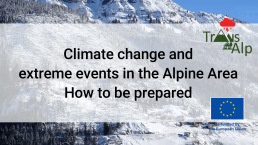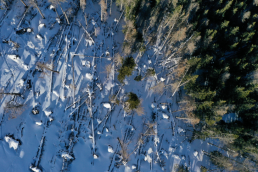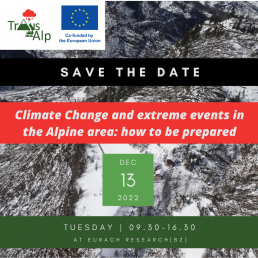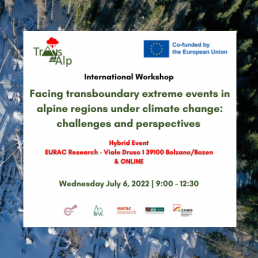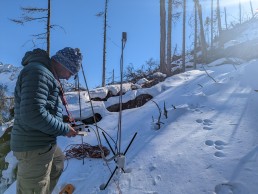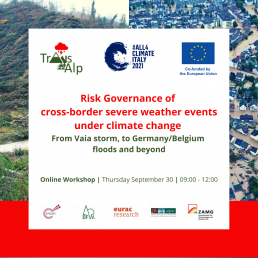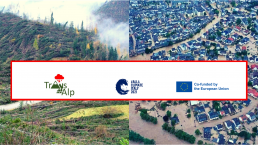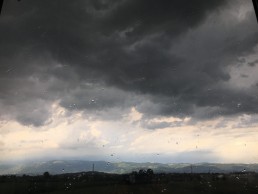The Final Publication file can be downloaded
The file containing the results of the two-year programme is online and can be downloaded free of charge.
The TRANS-ALP project consortium in 24 months covered a wide range of activities, addressing the broad topic of risk assessment in the case of extreme events, such as major storms in the alpine regions, and gaining a better understanding of the complex interaction between risk, exposure and vulnerability also in relation to in relation to cascading effects in several Alpine areas on the border between Italy and Austria.
The concept and objective definition of an extreme event in the region concerned was explored using statistical means, selecting past events that occurred between 1980 and 2020 characterised by strong hydro-meteorological anomalies and associated hydrometeorological anomalies and associated with adverse impacts observed in the affected areas.
The file can be downloaded by clicking here.
TransAlp project conclusion
The TransAlp project ended following the international conference entitled "Climate Change and Extreme Events in the Alpine Area. How to be prepared" which was held on December 13 in Bolzano-Bozen.
The occasion featured a series of talks that focused on issues related to disaster prevention and building resilient and resistant systems to new challenges related to climate change in the mountains.
It is possible to view and download all the materials produced as a result of the project, just click here!
Final event materials are now available
All materials produced during the conference "Climate Change and Extreme Events in the Alpine Region. How to be prepared" are now available to everyone.
You can find them on the dedicated website page or by clicking here.
The conference, which took place on 13 December in Bolzano - Bozen, allowed those present to discuss the challenges of climate change at high altitudes, and in particular to focus on disaster prevention and the building of resilient systems.
All lectures were uploaded online so that they could be accessed by as many people as possible.
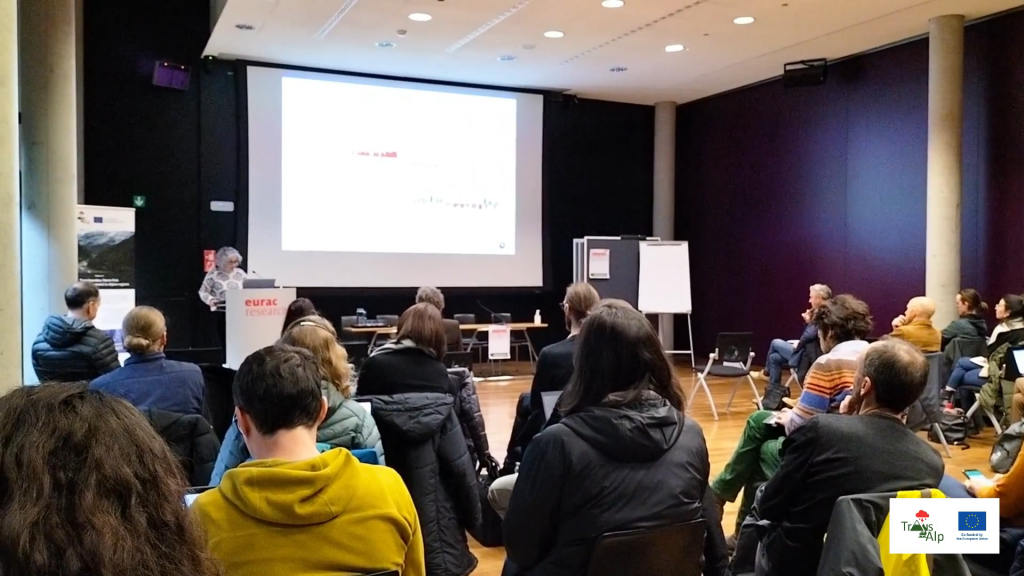
International Conference: "Climate Change and extreme events in the Alpine area: how to be prepared"
The date of the final event is approaching!
The international conference will be held in BOZEN (Italy) from 9.30 to 16.30
The meeting will be led in ENGLISH, GERMAN and ITALIAN
More info and registration form at the conference website
https://project-transalp.eu/en/international-conference/
International Workshop - Video available now
The video and materials of the International Workshop “FACING TRANSBOUNDARY EXTREME EVENTS IN ALPINE REGIONS UNDER CLIMATE CHANGE: CHALLENGES AND PERSPECTIVES” are now available at this link.
Trans-Alp field campaign at windstorm damaged forest
Trans-Alp field campaign at windstorm damaged forest slopes with susceptibility of future multi-hazard cascading effects in the pilot region of Easttyrol
Already in the inital phase of the Trans-Alp project, the BFW contributors focused on the area of Easttyrol (a large district of the federal state Tyrol), where the severe storm VAIA (Oct. 2018) destroyed thousands of hectares of protection forests which led to about 500.000 cubic meters of damaged timber. The windthrown and mostly immediately cleaned areas are often representing steep and inaccessible slopes close above settlements or transportation routes. At some spots, responsible actors have to count with “post-storm-cascading-effects” like landslides and avalanches because of the establishment of new release areas. This fact fits properly to the topic of T3.3 “Analyses of cascading effects of storm related land cover change” which is part of the work package WP3 “Approaches and Methodologies for Storm Damage and Loss Observation and Mapping”.
For the field campaign, one of the severely affected spots in the community of Kals am Großglockner was chosen. The campaign mainly focusses on snow distribution / snow cover formation and which effect the roughness of unmanaged windthrow areas has with regard to avalanche formation. A long-term goal is to observe the degradation of roughness over time from these unmanaged windthrow areas.
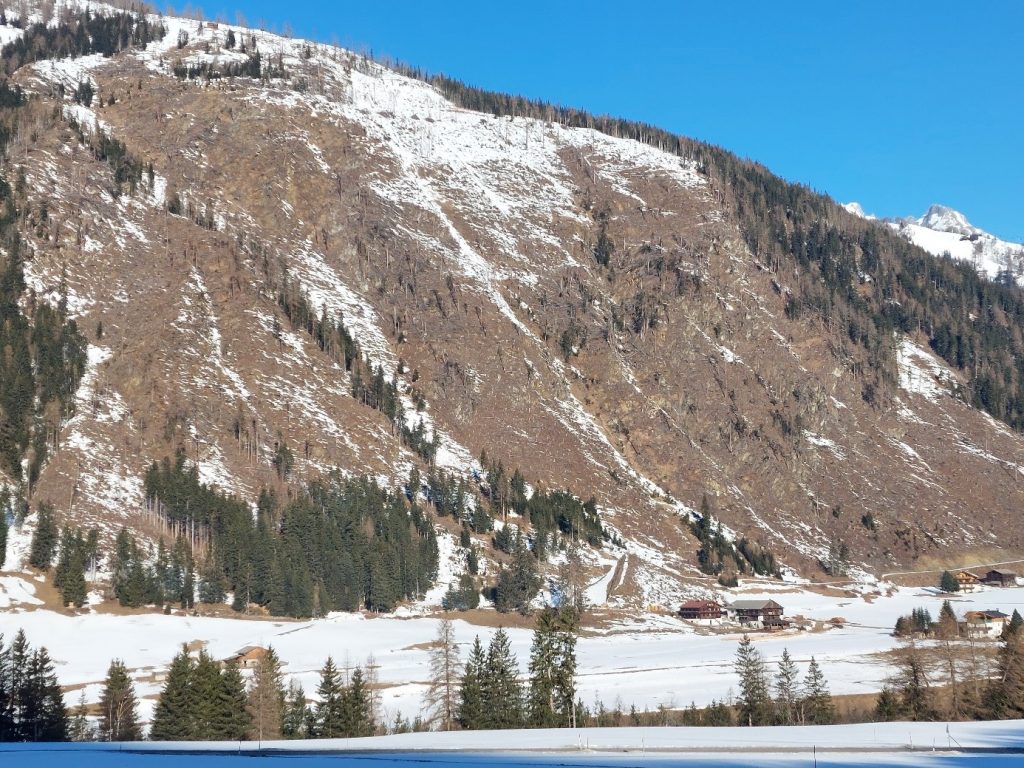
The core concept is, to examine areas in sustained forested stands, uncleaned windthrown stands (deadwood) and cleaned forest stands respectively open land. Substantial differences with regard to snow cover formation and subsequently avalanche formation are expected. The used methods include measurements with the SnowMicroPen (electric probe, developed by the SLF), drone-based photogrammetry and the recording of snow profiles. With the SnowMicroPen, the complex stratification of the snow cover (penetration resistances) and its spatial variability can be measured. This has already been done on several transects in differently vegetated terrain. The recording of snow profiles serves, among other things, as validation of the points measured with the SnowMicroPen. Drones are used to obtain a comprehensive overview of snow depth. These deliver extensive image data, which is compiled into an accurate 3D model in a complex post-processing process using point clouds. In this way, the snow depth and distribution can be observed over time and validated with the snow profiles or manual depth measurements.
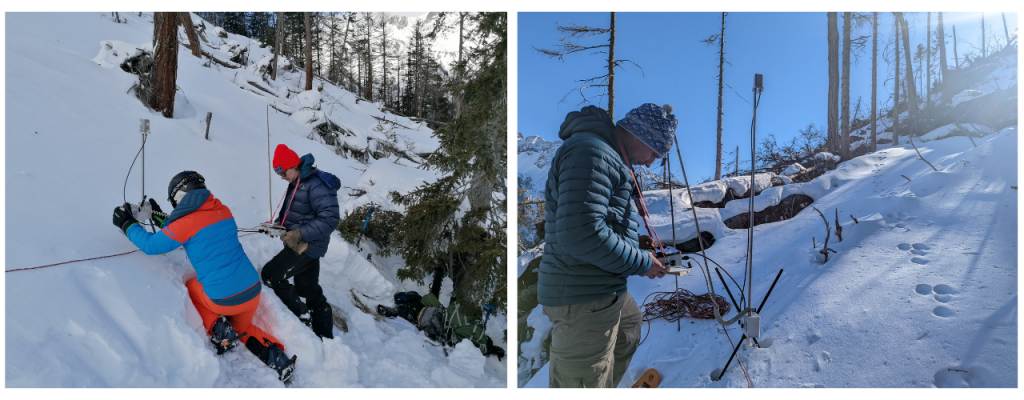
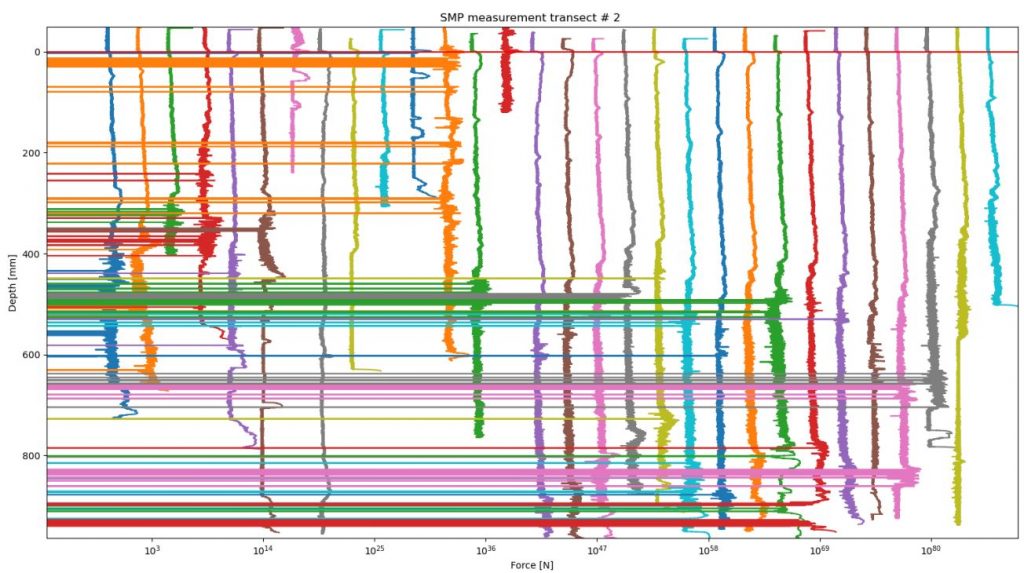
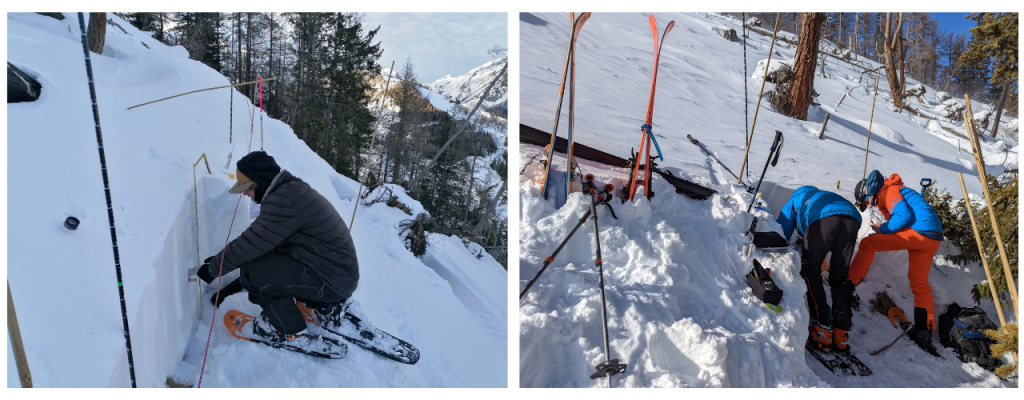
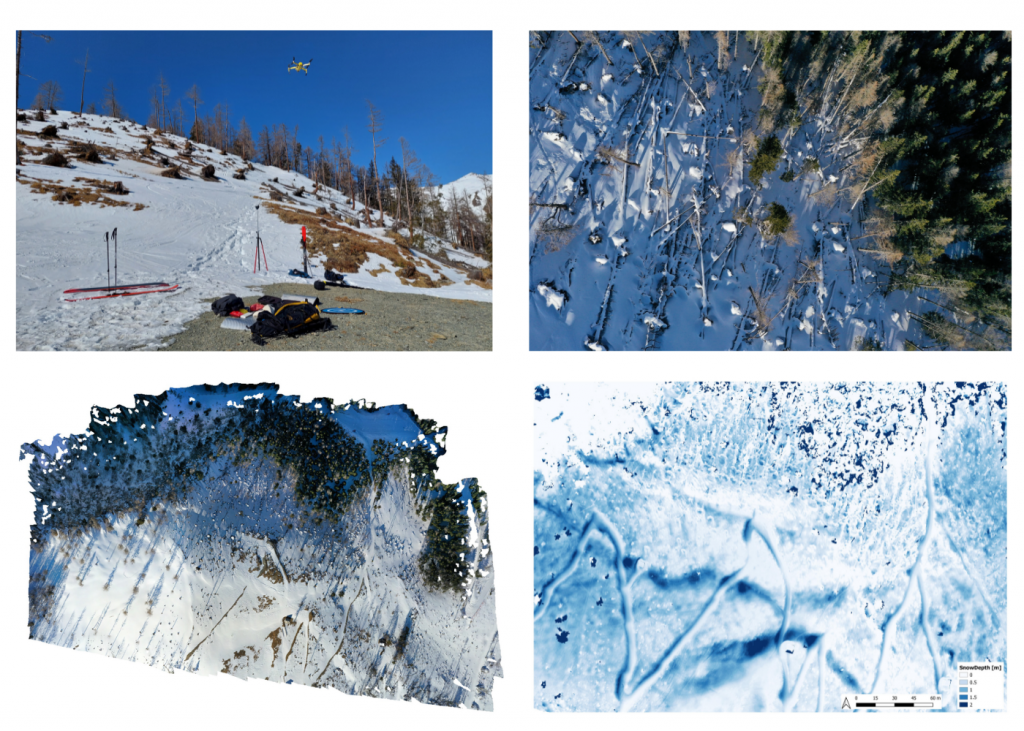
Based on this examination procedures, we want to contribute to a better understanding of the formation and build-up of snow cover on storm-damaged forest areas. The overarching goal is to better assess the potentially developing multi hazard and cascading effects. In addition, the applied work processes in the frame of this field campaigns are described within the framework of deliverable 3.3 in the form of a work procedure manual and guidelines.
Publication on Der Standard
The Austrian newspaper Der Standard has published an article that talks about the project, its objectives and its initiatives. The article, in German, can be reached from this link.
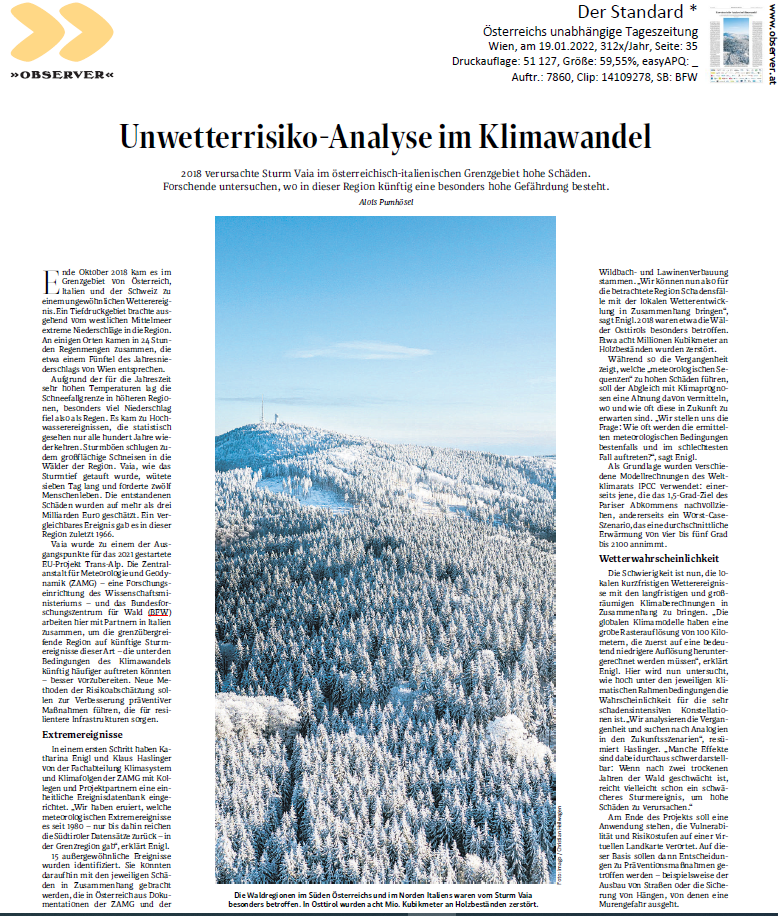
Online workshop - Recording available now
In the framework of the TRANS-ALP project, Eurac Research, with the support of EPC srl and ARPAV, organised the online workshop "Risk Governance of Severe Wheather Under Climate Change" with the aim of raising awareness and promoting discussion on the risk of severe hydro-meteorological events in the context of climate change. It was an opportunity to highlight and analyse potential similarities between past and recent disasters, such as Vaia, Central European floods and others, as examples of what could happen in the future, taking into account the latest data and estimates on climate change.
The workshop took place online in two sessions, with keynote speakers and a guided discussion.
The event, part of the All4 Climate Italy initiative, was addressed to researchers, practitioners and policy makers in the fields of risk forecasting, prevention, management, and assessment, but also to local authorities, civil protection operators, climate change researchers and the general public.
Recordings of the Workshop are available here: 30-September-2021 OnLine event – Trans Alp (project-transalp.eu)
30 September 2021 Online workshop – Risk Governance of cross-border severe weather events under climate change: from Vaia storm, to Germany/Belgium Floods and beyond
In occasion with the Pre-COP26 to be held from 30 September to 2 October in Milan and in view of the COP26 in Glasgow in November, the TRANS-ALP project aims to contribute to the discussion on the impacts of climate change with an online workshop focused in particular on forecasting and management of extreme meteorological events, starting from some exemplary cases that occurred in recent years.
The ultimate goal of the workshop is to raise awareness and encourage debate, even among different actors at European level, on these issues.
The event will be held online via Zoom on Thursday 30 September 2021 from 9:00 to 12:00. Participation is free, upon registration.
More information on the dedicated page: https://project-transalp.eu/event_sept_2021/
The event is included in the "All4Climate - Italy 2021" Program, aimed at promoting 2021 as the year of Climate Ambition: https://all4climate2021.org/
Due to the increasingly high temperatures, the intensity of weather phenomena is also increasing in South Tyrol
This trend is set to continue, with a forecast of rising temperatures from 1 ° C to 4 ° C by the end of the century as explained by Dieter Peterlin meteorologist of the Autonomous Province of Bolzano. The latter forecast is the most problematic since the development of thunderstorms depends on various factors, such as air humidity or wind and a rise in temperatures presupposes an increase in energy in the atmosphere and the consequent development of violent thunderstorms in the Alpine arc.
The Trans-Alp project, seeks to monitor all these parameters to provide practical tools and methodologies for the prediction of cross-border impact and risk assessments to public authorities and stakeholders, so as to prevent the damage that these violent weather events could inflict on environmental and socio-economic systems in the Alpine region.
CLICK HERE to watch an interview with the meteorologist of the Autonomous Province of Bolzano Dieter Peterlin (only in italian).




